- Home
- Alice Hoffman
Faerie Knitting
Faerie Knitting Read online
Praise for Faerie Knitting
“A beautiful book that takes flight and transports knitting to a magical place. I was enchanted by it all.”
—NICKY EPSTEIN,
knitwear designer and author of Nicky Epstein’s Knitted Flowers; Knitting on the Edge; Knitting Over the Edge; and Knitting Beyond the Edge
“Through these new fairy tales that cleverly combine knitting and storytelling, we return to the traditions of old, where protagonists are innocent, good triumphs over evil, love conquers all, and each knitted piece is transformative.”
—SHIRLEY PADEN,
knitwear designer and author of Knitwear Design Workshop
“Faerie Knitting celebrates how stories and knitting can work their magic and save our lives. From the first page, I was enchanted.”
—ANN HOOD,
author of The Knitting Circle and editor of Knitting Yarns and Knitting Pearls
Thank you for downloading this Simon & Schuster ebook.
* * *
Get a FREE ebook when you join our mailing list. Plus, get updates on new releases, deals, recommended reads, and more from Simon & Schuster. Click below to sign up and see terms and conditions.
CLICK HERE TO SIGN UP
Already a subscriber? Provide your email again so we can register this ebook and send you more of what you like to read. You will continue to receive exclusive offers in your inbox.
DEDICATION
With many thanks to my grandmother, Lillie, who told me my first fairy tales, and to Lisa, my dear cousin, with gratitude for her artistry and friendship.
—Alice
To my children, Aaron, Ethan, Erica, and Nicholas, and granddaughter, Reagan, my shining stars.
To my husband, Andrew, for your love and laughter.
And to my cousin, Alice, for being the best of both family and friend.
—Lisa
The authors wish to thank Carolyn Turgeon and Faerie Magazine for support and friendship.
CONTENTS
STORY INTRODUCTION
Alice Hoffman
KNITTING INTRODUCTION
Lisa Hoffman
CHAPTER 1: Amulet | Amulet Necklace
CHAPTER 2: Seventh Sister | Seventh Sister Capelet
CHAPTER 3: Three Wishes | Three Wishes Mittens
CHAPTER 4: The Lilac Tree | Lilac Tree Scarf
CHAPTER 5: Love Never Ending | Love Never Ending Cowl
CHAPTER 6: Blue Heron | Blue Heron Shawl
CHAPTER 7: Brokenhearted | Brokenhearted Vest
CHAPTER 8: Charm | Charm Bags
CHAPTER 9: Rose | Rose Glovelettes
CHAPTER 10: River Girl | River Girl Stockings
CHAPTER 11: Feather | Feather Hat
CHAPTER 12: The Night of the Witch | Witch Gloves
CHAPTER 13: Invisible | Invisible Hood
CHAPTER 14: Thorn | Thorn Blanket
ABOUT THE AUTHORS
GLOSSARY
FAERIE KNITTING NOTES
US/METRIC CONVERSION CHARTS
Story Introduction
Alice Hoffman
airy tales are the original stories passed down from grandmother to granddaughter on cold winter nights, when snow is falling and the fireplace is lit, when wolves lurk outside and the moon is bright. These are the tales that have lasted for centuries, continuing to have meaning for countless generations, stories that teach us about both the imagined and the real world as they warn us away from dark paths and dangerous beasts. Fairy tales bring us the deepest psychological truths. Even as children we can see past the fictional world of queens and castles and curses into our own modern lives. Truth is truth, no matter where a tale is set, in a forest or on the street where we live, and fairy tale themes provide a way for us to understand the complex web of relationships we are all bound to face. Who can you trust? Who is loyal and fearless? Who can rescue you better than you yourself can? Who can spin gold out of straw?
Fairy tales were the first stories I read, and they were also the very first stories I was told by my Russian grandmother. Her wondrous chronicles of a town where there was always snow and the river froze all year long, where wolves howled as she broke the ice to fetch water for her family each morning, were riveting. In each there was a lesson about bravery and self-reliance. Always look over your shoulder when walking through the dark, my grandmother told me. Trust yourself most of all.
Such stories are in the oral tradition of women’s tales, told and remembered and told again. Often they are cautionary tales about all that can go wrong in life. Our grandmothers want the best for us, of course, and the world can be a dangerous place. But the warnings are matched with good, practical advice and the message that it is always possible to set things right, particularly for a girl who carries a ball of yarn and a pair of knitting needles.
* * *
How fairy tales are told and remembered has a great deal in common with knitting traditions. It is no mistake that we describe storytelling as knitting a tale, or weaving a story, or spinning a yarn. Writing and knitting share many elements in creating “whole cloth” out of imagination. Both are passed down, within a family or among friends, and often the story or the pattern changes as it moves from person to person. Knitting and writing are both concerned with the process as much as with the end product; the doing and making of something is all-important, and neither is finite. We can always tug and shift yarn to make a garment more our own, a pattern that is uniquely ours, just as we can rewrite a tale so that it is told in our own voice. To be a writer or a knitter, one has to be willing to take things apart and put them back together again. It’s hard work to do so, and it takes courage. Patience is required, and the willingness to start over if need be, to rewrite or unravel.
* * *
I’ve always believed that knitting is a good practice for writers and that anyone writing fiction should be taught how to knit. There’s much to learn from the perseverance of knitters, their readiness to give themselves over to the process, to enjoy the act of knitting without expectation, to always be willing to change and revise, to make do with what they have, using scraps and bits of pieces that, if they’re lucky, may turn out to be glorious. The courage to take apart what you have worked so hard to create is worthy of a fairy tale heroine.
* * *
The tradition of the knitting circle as a welcoming place, where a knitter is able to do her work while others are attending to theirs, is legend. How much one can learn from others in such a setting is extraordinary, and merely being in the presence of expert knitters can change the direction of your own creation. This is true for writers’ workshops as well. Here, a writer is focused on her own work, but the influences of those around her, particularly those more experienced, affect the writer’s work and strengthen it.
* * *
Working with my cousin, master knitter Lisa Hoffman, has been a delightful collaboration that began in the pages of Faerie Magazine. From the start it was an experiment. Could knitting and storytelling make for a seamless experience? As it turned out, it was not only possible, it was also great fun. We have brought two different types of creativity to a single theme, and in doing so have experienced how one enriches the other. The knitwear brings the story to life, and the story gives meaning to the knitwear. Sometimes the story must change to suit the knitwear; at other times the pattern or yarn is changed to accommodate the story. In the process of working together, our lives and our work became interwoven in a new way. Work enriched our friendship. We learned to speak each other’s language.
In each of the stories, knitting figures into the plot and into the lives of the characters. It is what weaves the tales together, and many of the stories feature clever women who use knit
ting to its best advantage in order to change their fates, win back a lost husband, deal with a wicked queen, or find their way home again.
Fabric arts and storytelling have long been considered women’s domains, and so the two seem naturally suited to be together. Both take homespun, homemade things—yarn, the threads of a story—and elevate them into something beautiful and magical. We are indeed spinning straw into gold, beginning with one element and turning it into another. In both knitting and writing, the process is to take the ordinary and make it extraordinary; to make a creation that is both beautiful and useful, a singular object, made by hand, often as a gift for those we love—work that may be done on a snowy evening, by the fireside, where we bring our ideas to life. We create what we imagine. That is the meaning of the oldest magical spell. Abracadabra.
That is the magic of storytelling. And the magic of knitting.
Knitting Introduction
Lisa Hoffman
his has been a dream project for me, to work with my incredibly talented cousin Alice and to pair my knits with her beautifully written and incredibly imaginative fairy tales. We began with an idea of collaborating, and every time we came up with a new knit that would work in a story, we were thrilled to discover they fit together perfectly.
The knits in this book are photographed to be illustrative of the stories, to look magical and ethereal, yet each is a wearable or useful item for now and forever. The Invisible Hood is great to pair with a chunky warm sweater on a cool day, or with that one coat you love that just doesn’t have its own hood, or the Brokenhearted Vest, which is a great layer over a blouse and jeans. The Thorn Blanket can be knit in many sizes; follow the instructions as written to make a sweet baby blanket, or make it a larger afghan for cuddling under on your couch while binge-watching a favorite TV series. The Amulet Necklace, one of the easiest pieces in the book, is one of my favorites because I’ve created a template for an art piece that the knitter will personalize as an ornament to wear or to use as art, to hang on a door knob or on a holiday tree.
As a knitwear designer but also as a knitting teacher for many years, I write my patterns as simply and clearly as possible to eliminate any ambiguity in understanding the techniques and methods. By breaking down a pattern to its basic elements, I format each step and give tips on how to best work through the pattern from start to finish. I learn from my students as they learn from me.
I tell my students not to be afraid of what they are doing, but I understand their fear. If they do not completely understand the way the stitches are being formed or if they have not grasped a new technique, they do not feel in control of what is right in their own hands. Like some of the stories in this book, knitting can be a strange and scary endeavor to face, a sort of monster to tackle and to overcome. But it is only yarn and needles, simple and beautiful tools that we can hold and caress and use to create something wonderful.
I love knitting for the sake of the craft. For the interest in design. For the intrigue of how my stitches create art. For the satisfaction of learning and working through a new skill and perfecting it to the best of my ability. I also inherently know that what I do will not be “perfect”; there will be some stitches that are uneven, some rows knit looser or tighter depending on whether I was knitting in the car (in the passenger seat, of course) or in my favorite chair at home. There is sometimes a decrease leaning the wrong way in a lace pattern that I did not notice or an extra row in one glove so it’s just a smidge longer than the other. It is a little imbalanced, but I still appreciate what I have achieved. As knitters, we should love the process and not be upset by the little blips along the way. Keep going, use what you have learned, and move on to the next project.
I hope that the pieces in this book bring you joy to work on, pleasure to own, and magic to share.
Chapter 1
Amulet
n the village where they lived, everyone knew there was only one way for a person to be safe from the beast that lived in the woods. Wear an amulet around your neck, and when he comes upon you he will know you are protected. A spell will be broken and you will speak in his language and he will understand yours. But there was more to surviving a meeting such as this. You must be brave. That was the most difficult task.
A map was placed in the center of town charting the way to the home of the beast. All of the men turned away. They had families to look after. None of the boys stepped forward. They had their lessons to think of.
They all stayed behind the walls of their village. This was the season when people shut themselves into their houses, had only soup to eat, and trembled when they heard howling. When the beast came to circle the walls, they tossed out what little they had. Crusts of bread, onion skins, a pot of beans. Still, they shivered and lived in fear. They could not pass the village gates to go into the fields to gather more potatoes and onions. Children had nightmares about teeth and claws. Girls saw no future and refused to fall in love. Young men cursed themselves for having so little courage.
When no one offered to be brave, a lottery was held. They wrote their names on stones and rolled them out on a tabletop to choose their hero. One name came up. Ada. She was the bravest among them, and the strongest. When she shot an arrow, she always met her mark. When she came upon a mountain, she would swing a rope and climb to the top. Everyone knew she was the only one who could save them.
In truth, her name had been written on every stone.
Her grandmother gave her a meager packet of food, mostly crusts of bread. She dressed Ada in layer after layer of clothing: sweaters, jackets, coats, hats, gloves, mittens. Then she slipped a ribbon around Ada’s neck. It was the amulet that would allow her to speak the beast’s language and enable him to understand her.
Wearing it, Ada felt no different.
You will feel different, her grandmother told her. When peril is near, you will hear what you have never heard before, and you will be heard, even by those who have no ears.
Ada left when the snow was patchy, carrying her bow and arrow. Her grandmother had given her a ball of yarn, saying it was always good luck to travel with one. The farther she went into the woods, the deeper the snow became. It was rough going, even for a girl who climbed mountains. She grew exhausted. She rarely cried, but she was nearly defeated.
How do I go on? she said.
The amulet allowed the oak tree she stood beneath to understand her language. Take my branches and strap them to your feet. Ada quickly did so. With her snowshoes she could go more swiftly. To thank the oak, she removed the ax a woodsman had left in its bark, carrying it with her so the tree wouldn’t be chopped down.
In the forest, night fell like a curtain. Ada slept beneath some hedges until she heard an owl. She understood its language when it called for her to wake. She could see paw prints as large as a man’s hand circled all around her. The prints made a path that had tamped down the snow. To thank the owl, she left the snowshoes she no longer needed so that the branches could be of use for the owl’s nest. She went on through what she thought was a field of ice, not realizing that she was crossing a pond. She fell through the ice and might have drowned, had a huge fish not come to her aid. Because Ada could understand its language, she followed beneath the ice, swimming through the cold water until she reached the shallows, where she used the ax to break through the ice. Before she went on she reached into her pockets for the crusts her grandmother had given her so she could thank the fish.
At last she came to the deepest part of the forest. She heard the beast that so terrified the village. But when he howled she understood his language. All at once she knew how lonely it was to be a beast. Save me from myself, he said. She followed the path and there he was, a huge wolf.
I’ve come for you, Ada said.
You? the beast snarled. Your kind wants to destroy me.
Ada placed her bow and arrow on the ground.
The beast laughed. Leave me be, he said. Leave me to the misery of being a beast.
From
the east, there came a group of hunters, who began to fire their weapons. The beast was fearsome when he defended himself, even though he was surrounded. Ada grabbed her bow so that she could help chase the men away. When arrows flew, the hunters scattered, back to where they’d come from.
This is what hatred is like, the beast said. It never stops.
* * *
He led her to the edge of the forest, past the icy pond, where the fish had shown her the way; past the hedges, where the owl had spoken to her; past the oak tree, where the two slept sheltered from a storm. When they reached the outskirts of the town, the beast began to cry. Ada sat down beside him. She thought about her grandmother’s advice, how the amulet would make a difference to someone in peril. She slipped it off and strung it around the beast’s neck with a bit of her grandmother’s yarn, and from then on they understood each other perfectly, for he was a man who’d been under a spell, ruined by hatred, but now was restored by her love.
Amulet Necklace
DIFFICULTY: Beginner
MATERIALS
Tahki Yarns Cotton Classic (108yd/100m, 50g/1.75oz) 100% Mercerized Cotton, 1 skein in color #3724 Leaf Green.
Or approximately 22yd/20m of any DK-weight yarn that meets gauge for each leaf. See Knitting Wisdom for yarn alternatives.
Size 4 (3.5mm) needles or size to obtain gauge.
Assorted feathers, beads, charms, found objects.
Darning needle.
Sewing thread and needle.
Approximately 1.33yd/1.25m of 3/8"/10mm black velvet ribbon or cord for necklace.
SIZES
One size.
FINISHED MEASUREMENTS (FOR SAMPLE SHOWN)
Before finishing: 61/2"/16.5cm at widest point, 4"/10cm length.

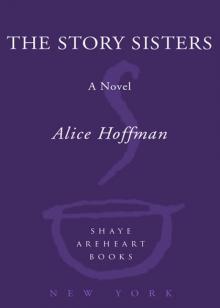 The Story Sisters
The Story Sisters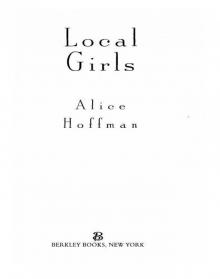 Local Girls
Local Girls Blue Diary
Blue Diary The River King
The River King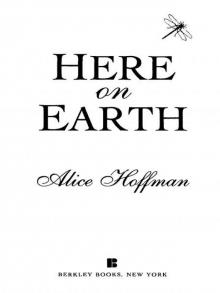 Here on Earth
Here on Earth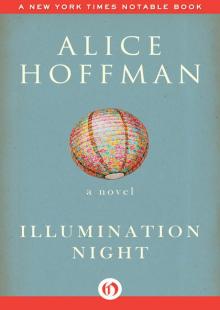 Illumination Night: A Novel
Illumination Night: A Novel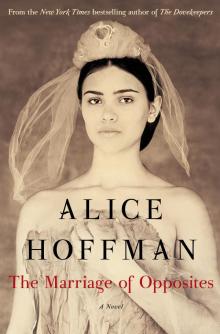 The Marriage of Opposites
The Marriage of Opposites Nightbird
Nightbird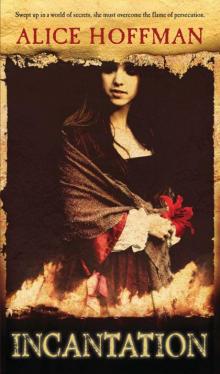 Incantation
Incantation Skylight Confessions
Skylight Confessions The Ice Queen
The Ice Queen Second Nature
Second Nature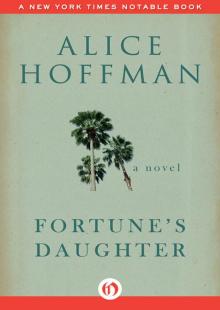 Fortune's Daughter: A Novel
Fortune's Daughter: A Novel Seventh Heaven
Seventh Heaven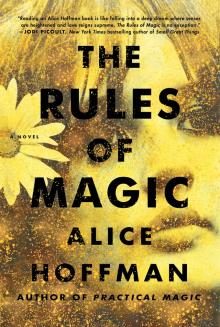 The Rules of Magic
The Rules of Magic The Red Garden
The Red Garden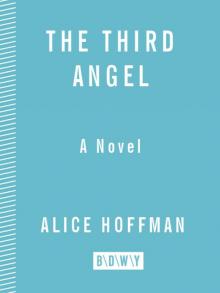 The Third Angel
The Third Angel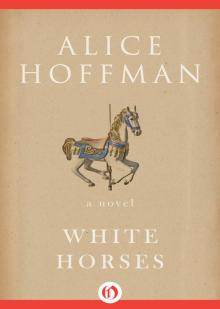 White Horses
White Horses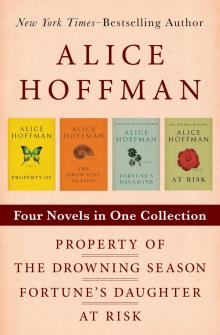 Property of / the Drowning Season / Fortune's Daughter / at Risk
Property of / the Drowning Season / Fortune's Daughter / at Risk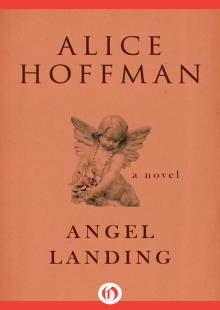 Angel Landing
Angel Landing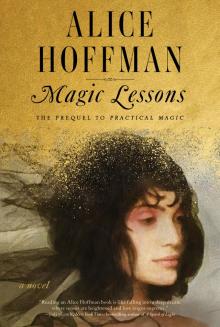 Magic Lessons
Magic Lessons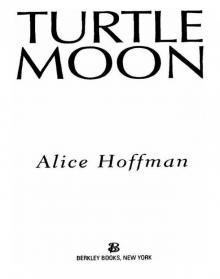 Turtle Moon
Turtle Moon Aquamarine
Aquamarine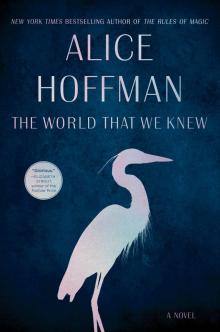 The World That We Knew
The World That We Knew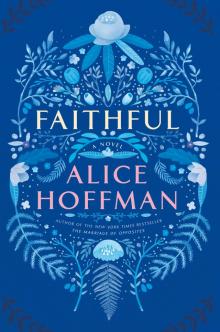 Faithful
Faithful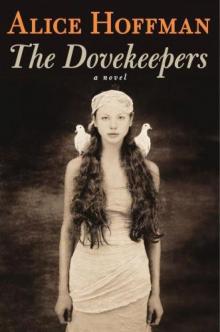 The Dovekeepers
The Dovekeepers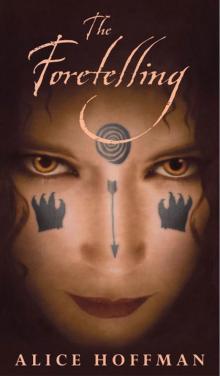 The Foretelling
The Foretelling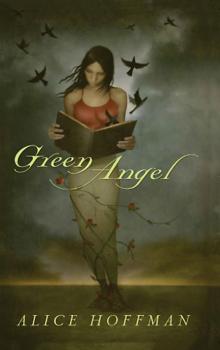 Green Angel
Green Angel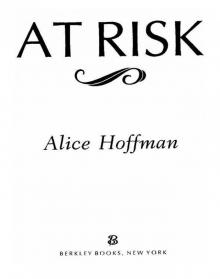 At Risk
At Risk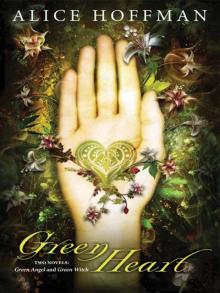 Green Heart
Green Heart Fortune's Daughter
Fortune's Daughter Faerie Knitting
Faerie Knitting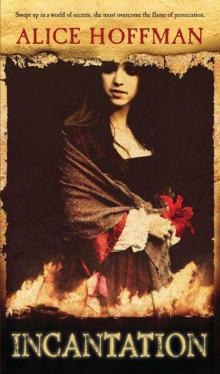 Incantation (v5)
Incantation (v5)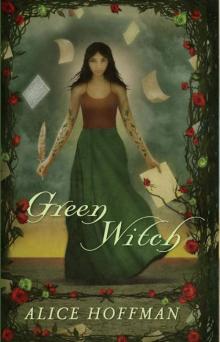 Green Witch
Green Witch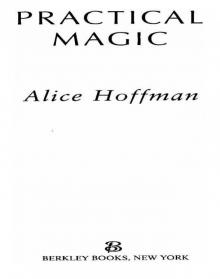 Practical Magic
Practical Magic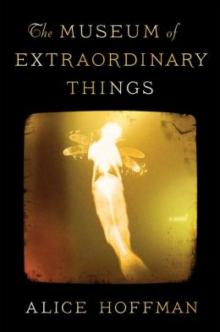 The Museum of Extraordinary Things
The Museum of Extraordinary Things The Probable Future
The Probable Future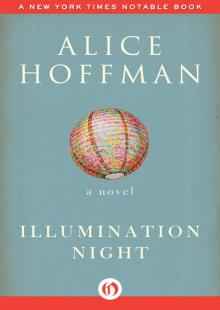 Illumination Night
Illumination Night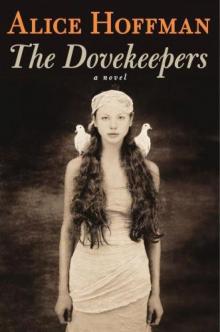 The Dovekeepers: A Novel
The Dovekeepers: A Novel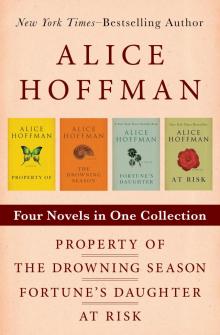 Property Of, the Drowning Season, Fortune's Daughter, and At Risk
Property Of, the Drowning Season, Fortune's Daughter, and At Risk